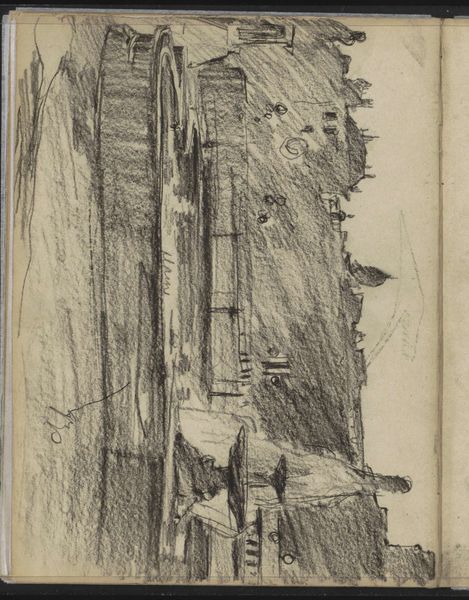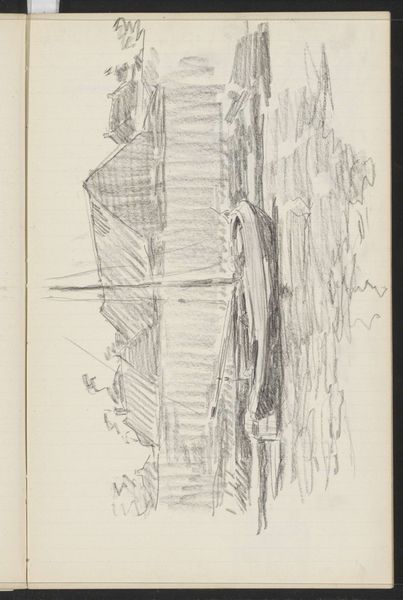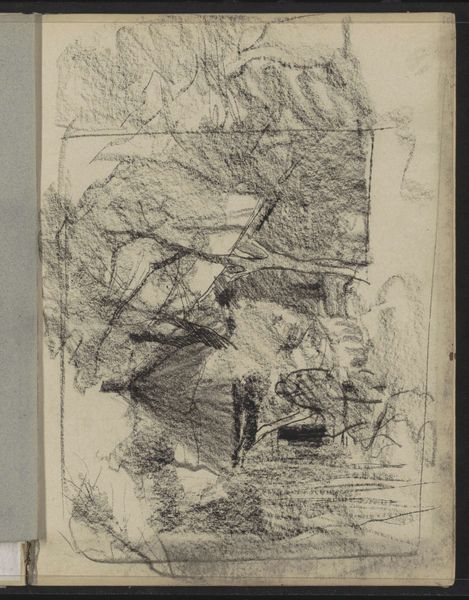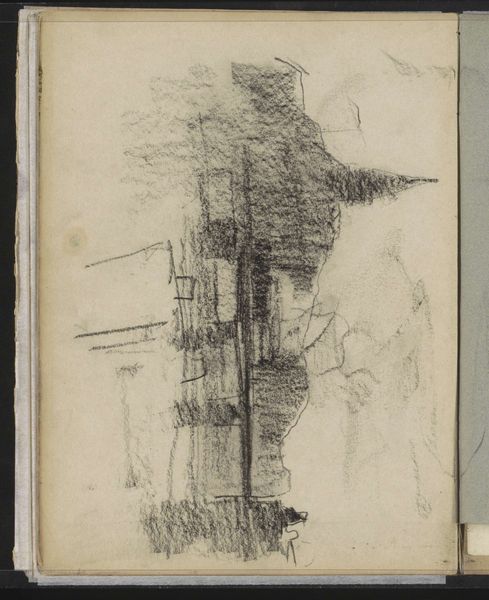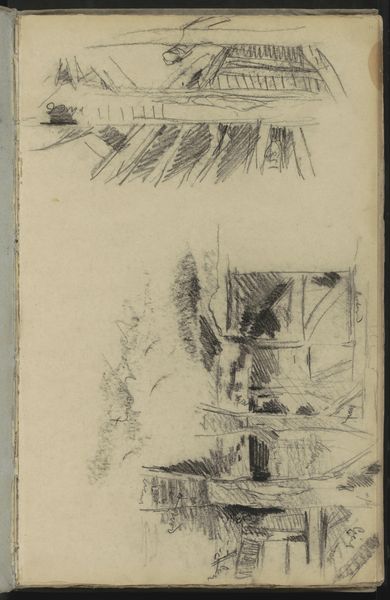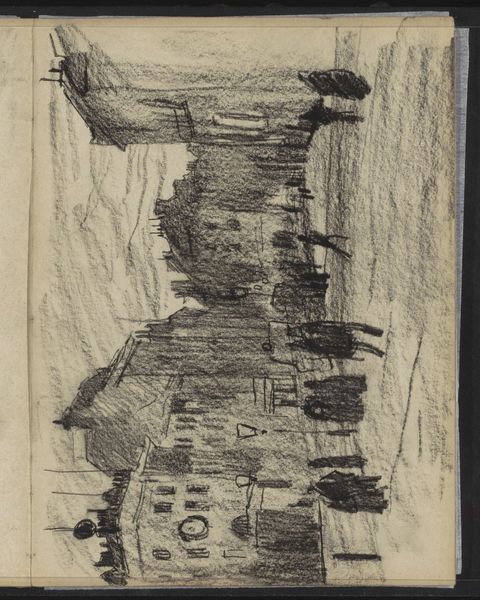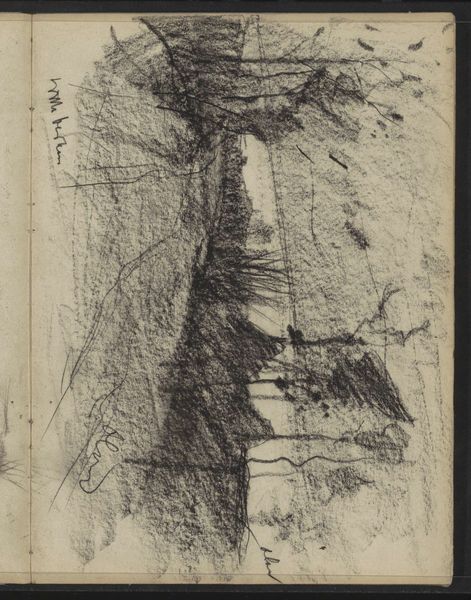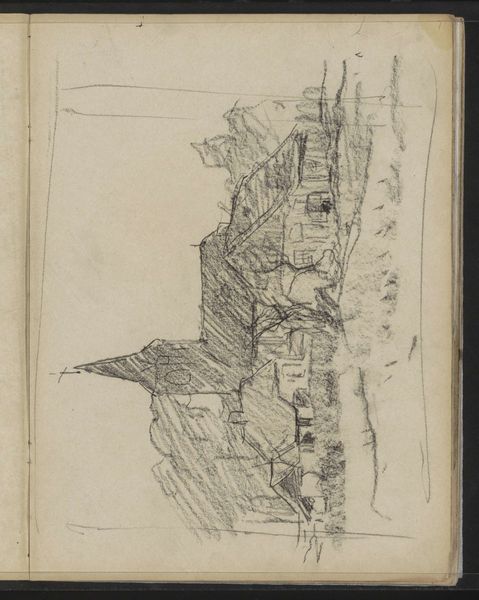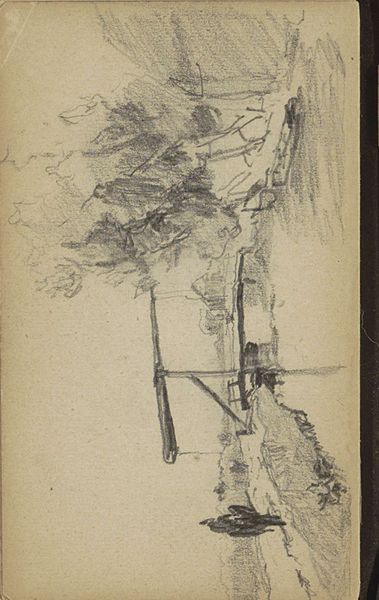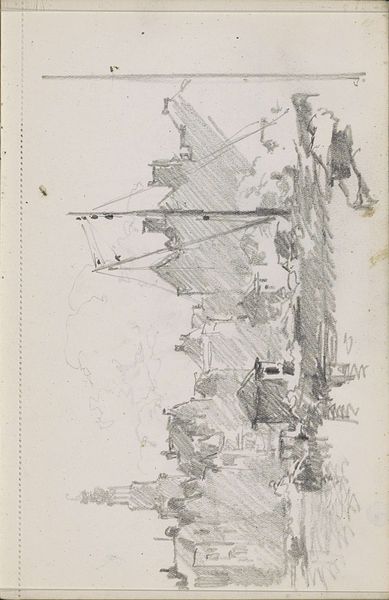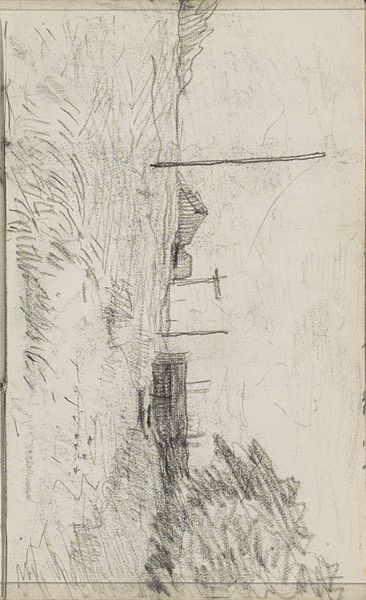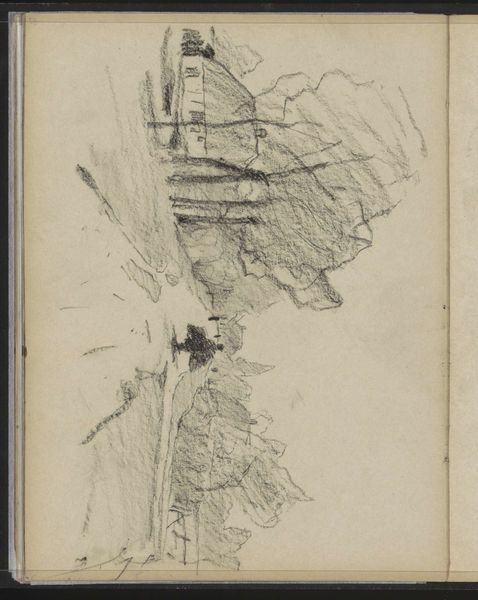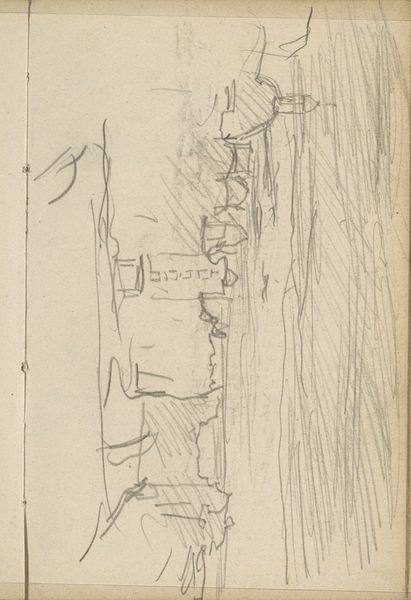
drawing, pencil
#
drawing
#
impressionism
#
pencil sketch
#
landscape
#
pencil
#
cityscape
Copyright: Rijks Museum: Open Domain
Curator: Here we have Willem Witsen’s pencil drawing, “Dorpsweg te Diepenheim,” from around 1888. It's part of the Rijksmuseum collection. What's your first impression? Editor: It’s like peering through a misty window into a simpler time. The immediacy of the pencil work lends it this… vulnerability. Almost as if you're witnessing Witsen capturing a fleeting moment he stumbled upon. Curator: Exactly! It’s an interesting record, especially if you think about the social and material realities captured through the medium of a humble pencil and paper. Imagine Witsen out there, charcoal or graphite stick in hand, quickly capturing this view of everyday rural life. It's like documentary but also impressionistic, as in a way capturing light became material as well as information. Editor: You know, the starkness of the drawing emphasizes labor to me—not the obviously hard labor that would occupy rural workers, but the work of observation and the quick movements that make up art making. You see this play between the solid masses of buildings and the soft textures of foliage. Curator: Witsen often focused on atmospheric effects. You can almost feel the damp air clinging to the buildings. He found poetry in these everyday scenes. There’s a distinct lack of people, emphasizing instead, the built environment with just that whisper of wild nature. Editor: This interplay—nature versus the buildings—speaks volumes about how humans literally ‘build’ their world within landscapes that aren’t made to be built on, like a dialogue about our place. Do we improve landscapes or just work around them? The dark lead pigment contrasts starkly against the off-white paper, highlighting the deliberate artistic choices made to represent that labor of inhabiting land. Curator: Looking at Witsen’s mark-making really gets you wondering about the relationship between what he observed and how he felt. It’s like his emotions were translated directly to paper. Editor: True. What really stays with me is how this drawing demystifies art production—no fancy paints, just observation, accessible tools, and intentional human effort revealing something universal about our world, about working, building, and existing within specific places.
Comments
No comments
Be the first to comment and join the conversation on the ultimate creative platform.
